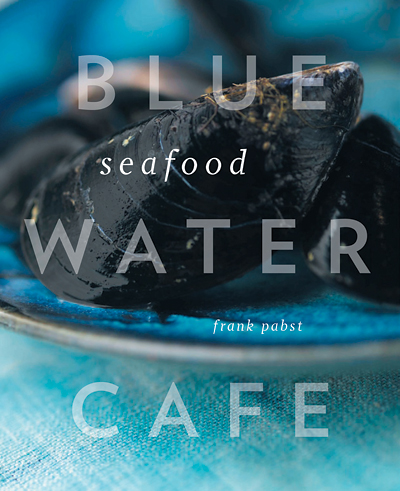
A farm-to-table restaurant is a concept that emphasizes the quality of food than ease and convenience. Restaurants in this category make use of seasonal ingredients that are locally sourced and usually organic. This allows the food to maintain its natural freshness and nutritional benefits in hopes to replace processed foods, which can be detrimental to the quality of the dishes and our health.
This category is rapidly growing, and there are more than 35 restaurants in Vancouver alone, such as Fable, Blue Water Café, and C Restaurant. (For all the foodies out there, I urge you to try these places, but it may be costly, so be prepared for that) These restaurants definitely see the value in locally sourced food from a business and environmental perspective. If done correctly, there are substantial benefits for the environment and for the economy.
The Good
Traditionally, fruits and vegetables have to travel long distances (cargos, trucks, trains, planes) before they reach the restaurants. There are two immediate concerns that arise: one, it means that the produce is harvested before it fully ripens, and two, travelling long distances will mean higher emissions of carbon.

Harvesting crops before they are fully ripe often do not absorb as much nutrients as they can. Thus, it is less healthy, based on nutritional value, and it does not taste as good. In addition, long delivery times require the crops to be resilient to aging. On average, food travels 2400km (1500mi) from farms to customers; therefore preservatives are sometimes added to prevent spoilage. Travelling long distances is also the main reason why crops are harvested prematurely.
The farm-to-table concept almost completely eliminates these issues. Ingredients are harvested only when it is fully ripe; hence, there is more nutrition, more taste, and less preservatives. At the same time, locally sourcing food will mean significantly fewer gas emissions. Locally-sourced foods travel approximately 72km (44.6mi) on average, and emit 5 to 17 times less CO2 than conventional food distribution systems. In fact, a number of chefs even ride the bicycle to farms and personally pick the ingredients – even better!
Aside from that, a scientific study shows that organic farming can improve the efficiency of the supply chain, reduce soil erosion and water pollution, and preserve biodiversity. Making food local can further improve the positive effects in our environment.
So why not do it?
The Bad
There will be instances when locally sourcing inputs is not good, and that is when people are doing it wrong. For example, the southern part of India is a natural producer of rice because of its ideal climate and abundance in water. After all, it requires a substantial amount of water to grow the crop. South India is responsible for supplying the whole country with rice. On the other hand, North India decides to set up its own rice plantation to increase the supply levels. However, the problem arises when a large portion of the water supply from North India had to be allocated to the plantation, which led to a water shortage.

This case teaches us that locally sourcing food is environmentally beneficial only if the produce is ideal to grow in a specific location, based on geographical conditions; otherwise, there will be more environmental damage than benefits. Attempting to grow a tropical fruit in a country with four seasons will have more negative environmental impact than simply importing the product.
The Verdict
Organic, local, sustainable. These are the key factors that will determine the success of the farm-to-table concept. It will not be sustainable if a farm attempts to grow a produce that will not thrive in a particular location. Local foods are generally healthier and tastier than conventional food products, which adds value for restaurants. More importantly, it is environmentally-friendly. Producing organic foods further strengthen the positive effects for the environment.
Relevance to Marketing
From a marketing perspective, the farm-to-table concept is a differentiator by itself. Customers are willing to pay a premium for locally sourced foods. Moreover, it also encourages the customers to keep coming back because chefs will have to come up with exciting new dishes based on the availability of food. In essence, if you can do it now, just do it already.
Now, I’m hungry.. are you?
Click on the images below to visit their websites (I did not get paid to advertise for them)
Further Reading:
http://www.culinaryschools.com/farm-to-table-movement
http://greenliving.about.com/od/greenathome/a/Farm-To-Fork.htm


Fable is one of my favourite restaurants! I think it’s interesting how many people automatically associate “organic” and “local” food with sustainability. Buying local sounds great and is a feel-good purchase, however, like you pointed out, it’s not always a simple case of local = better. According to the CFIA, food can be labeled “local” as long as it is produced within the same province, or within 50km of a neighbouring province. Such a broad definition of the term makes it that much harder to tell when local = sustainable, and that much easier for restaurants to market themselves as sustainable without actually embracing the concept.
Managing the supply chain is as important as having great receipts for a restaurant.
And this not only because of the taste of the food, but also because they are legally responsible for anything that happens to a customer because of what they served him.
In terms of quality, knowing the producers and having a good relationship with them will ensure the restaurant to get the top products the producers have to offer.
Thus the farm to table concept sounds pretty obvious to me.
However, there is something new that begins to attract restaurants and bars. It’s “Grow the food you serve”!
We met Lisa of Victory Gardens, our project client for this class.
There are two objectives for growing your own food as a restaurant/bar: Marketing and costs. You prove the quality of your products by showing them and it creates a nice atmosphere. In addtition, depending on what you grow, it can be cost-effective. That’s the case of herbs, and that’s why bars start growing mint, and other herbs for their cocktails.
Good post Alvin! It definitely made me hungry. I love Fable, and am a huge fan of farm-to-table restaurants. I think restaurants are beginning to realize that people are willing to pay a higher price for locally sourced, organic foods, and the success of restaurants like Fable prove the case. If we look at Vancouver specifically, I think we have the resources to grow local foods without causing shortages of any kind. If anything, it is a win-win situation for local farmers who have a guaranteed revenue stream, and for restaurants who are able to provide the promised farm-to-table menu selection. To improve this farm-to-table restaurant industry, I think there should be stronger guidelines and regulations, and greater transparency on what exactly constitutes local and organic. Nonetheless, I think farm-to-table restaurants are a step in the right direction to create a more sustainable restaurant industry.